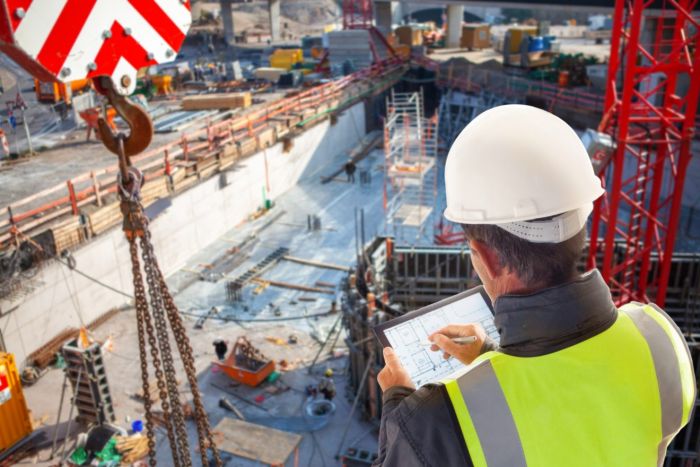Tips & Tricks
9 min read
How To Manage Multiple Construction Projects Simultaneously


Managing multiple construction projects at the same time can be tough, but effective management is key to success. With tight deadlines, limited resources, and different teams to coordinate, things can quickly get overwhelming.
Poor management often leads to delays, budget issues, and safety risks. However, using clear strategies, like proper planning, smart use of technology, and strong teamwork, can make the process easier.
In 2024, tools like cloud-based project management software and real-time communication apps have made handling several projects more efficient than ever. This article will explore simple yet effective ways to manage multiple construction projects smoothly.
Before jumping into managing multiple construction projects, it’s crucial to set a strong foundation. Properly understanding the scope and objectives of each project ensures smooth execution and minimizes costly errors.

Every construction project is unique, with its own set of goals, timelines, and deliverables. Begin by outlining specific objectives for each site. For instance, is the priority to complete a commercial building within six months, or is the focus on maintaining eco-friendly standards? Clear goals give your team a roadmap and measurable targets to achieve.
In 2024, the global trend toward sustainable construction has made defining environmental objectives, such as reducing carbon emissions or using green materials, a critical part of project planning.
Client satisfaction is at the heart of every successful project. Regularly engage with clients and stakeholders to align their expectations with project goals. This includes understanding their budget, preferred materials, and timelines. Open communication builds trust and prevents misunderstandings later.
Use project visualization tools, like Building Information Modeling (BIM), to give stakeholders a clear understanding of the proposed outcomes, reducing approval delays.
When managing multiple projects, interdependencies, such as shared resources, overlapping deadlines, or common subcontractors, can create bottlenecks. Use dependency mapping to identify how one project’s progress or delays might impact others.
If two projects rely on the same equipment, schedule their usage in advance to avoid clashes. In 2025, advanced scheduling software like Primavera P6 and Procore has become essential for mapping interdependencies efficiently.
Strategic planning is the backbone of multi-project management. It helps you control timelines, allocate resources, and ensure nothing falls through the cracks.
A master schedule provides a bird’s-eye view of all ongoing projects, showing how each one fits into the larger picture. This comprehensive timeline helps identify overlapping tasks, avoid resource conflicts, and track progress at a glance.
Many construction managers now use cloud-based platforms, such as MS Project or Procore, to create dynamic master schedules that can be updated in real-time. This has significantly improved coordination, especially for teams spread across multiple locations.
Instead of tackling everything at once, break projects into manageable phases. For example, divide each project into design, procurement, and construction stages. This approach allows teams to focus on one phase at a time, ensuring quality and efficiency.
The phased approach is gaining popularity in modular construction. In 2024, modular building projects accounted for nearly 10% of global construction, as they allow for simultaneous on-site and off-site progress, saving time and costs.
Setting clear milestones for each project ensures steady progress. Milestones act as checkpoints to review completed work, identify delays, and recalibrate plans if needed. For example, aim to complete the foundation stage within the first month or ensure all permits are secured before procurement begins.
According to a 2024 McKinsey report, construction projects that use milestone-based tracking have a 30% higher likelihood of staying on schedule and within budget.
Technology has become a cornerstone for managing multiple construction projects, enabling better organization, communication, and efficiency. When utilized effectively, it helps streamline operations and reduces the risk of errors.
Using project management software like Anterra Technology, Procore, Primavera, or MS Project allows managers to centralize all project-related tasks. These tools consolidate schedules, resources, and communication in one place, providing a clear overview of each project’s progress. This reduces the chances of missed deadlines or overlooked details.
Cloud-based tools facilitate seamless communication by allowing teams to access updated project information anytime, anywhere. These tools enable real-time sharing of documents, design plans, and progress reports, ensuring that all stakeholders are on the same page. For example, subcontractors can upload site photos directly to the cloud, keeping managers informed about site conditions without delays.
Construction-specific technologies, such as Building Information Modeling (BIM) and the Internet of Things (IoT), add value to project management. BIM helps visualize project designs and detect potential clashes during the planning phase. IoT devices, such as connected sensors, allow real-time monitoring of equipment, materials, and site conditions, improving safety and productivity.
Effective coordination and delegation are essential when managing multiple projects. By assigning clear roles and collaboration, you can ensure that teams work efficiently and meet project objectives.
Each construction project requires a team that understands its specific objectives, timelines, and challenges. Form dedicated teams for each project and clearly define individual roles and responsibilities. This prevents confusion and ensures accountability at every stage.
Appointing project leads for each site ensures smoother decision-making. These leads act as the primary point of contact for their respective projects, addressing issues promptly and minimizing the need for higher-level approvals. Empower them to make decisions within their scope, allowing faster problem resolution.
While dedicated teams are important, cross-team collaboration is equally crucial, especially when projects share resources or timelines. Foster a culture of knowledge sharing, where teams can learn from each other’s successes and challenges. Regular meetings, workshops, and joint planning sessions can strengthen collaboration and improve project outcomes.
Managing resources efficiently is essential when overseeing multiple construction projects. Proper distribution of labor, materials, and equipment ensures that no site experiences delays due to shortages.
Tools like construction scheduling software can help plan resource allocation, making it easier to share equipment and skilled labor across sites. Keeping an updated inventory and maintaining equipment regularly reduces downtime and unexpected interruptions.
Predictive tools allow project managers to foresee potential resource shortages, enabling them to address issues proactively and avoid disruptions to timelines.
Managing finances across multiple projects requires constant monitoring of budgets and cash flow. Each project should have a well-defined budget, but it’s equally important to maintain an overview of the company’s overall financial health.
Consolidated financial reports provide insights into cost variances, enabling timely corrective actions. Proactive measures, such as contingency funds, help address cost overruns caused by unexpected expenses.
By staying on top of financial performance and making adjustments as needed, managers can ensure that all projects stay within budget and progress without financial setbacks.
Strong communication is essential for managing multiple construction projects effectively. Clear communication channels among teams and stakeholders ensure that everyone stays informed and aligned.
Weekly briefings help share updates, resolve issues, and maintain transparency across all projects. Visual dashboards can make communication even smoother by offering real-time insights into project progress, tasks, and deadlines, allowing all parties to stay accountable and on the same page.
Consistent and structured communication minimizes misunderstandings and keeps projects moving forward.
Managing risks across multiple projects requires identifying potential issues early. Assess risks for each project to understand how they might impact timelines, budgets, or resources. Create tailored risk management plans to address critical challenges, such as supply chain disruptions or weather delays.
These plans should be flexible and revisited regularly to ensure they remain relevant as projects progress. By being proactive and adaptive, you can minimize the impact of unexpected events and keep projects on track.
Compliance and safety are the foundation of successful construction management. Use a centralized tracking system to monitor adherence to legal and industry regulations for all active projects. Regular safety audits across sites help identify potential hazards before they escalate, ensuring a secure environment for workers.
Consistent training programs empower teams to follow safety protocols diligently, reducing risks and promoting a culture of responsibility. By prioritizing compliance and safety, you not only avoid costly penalties but also enhance productivity and team morale.
Flexibility is key when managing multiple construction projects. Unexpected challenges, such as supply chain disruptions or scope changes, demand quick thinking and agile decision-making. Analyze completed projects to identify areas for improvement, turning past experiences into actionable insights.
Encourage open communication with teams and clients to gather feedback that informs better practices. By fostering a culture of adaptability and continuous learning, you create a foundation for long-term success in managing complex, overlapping projects.
Managing multiple construction projects simultaneously requires a combination of strategic planning, effective communication, and the use of modern tools. By optimizing resources, maintaining financial control, and prioritizing safety and compliance, project managers can streamline operations and ensure each project stays on track.
Adapting to unforeseen challenges and learning from completed projects fosters continuous improvement. With clear goals, proactive risk management, and strong team coordination, managing multiple construction projects becomes a structured process that delivers successful outcomes.
1. How do I prioritize tasks in multiple construction projects?
Prioritize tasks by assessing deadlines, project dependencies, and critical milestones. Use scheduling tools like Gantt charts to visualize priorities and adjust as needed.
2. What tools are best for managing multiple projects?
Project management software like Procore, Asana, or Primavera can centralize tasks, track progress, and enhance communication. These tools are ideal for multi-project environments.
3. How can I minimize resource shortages across sites?
Use predictive tools to forecast resource needs and plan allocation in advance. Regularly update inventories and share resources between sites efficiently.
4. How do I ensure compliance across multiple construction sites?
Implement a centralized compliance tracking system and conduct regular audits. Provide consistent training to teams to ensure all regulations are followed.
5. What is the best way to manage risks in simultaneous projects?
Identify potential risks early and create specific management plans for each project. Regularly revisit and update these plans to address evolving challenges effectively.
Be the first to post comment!